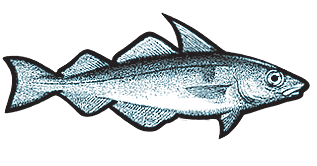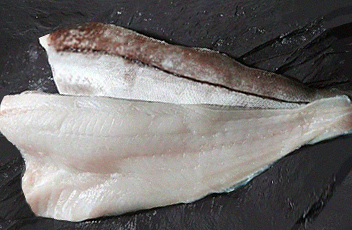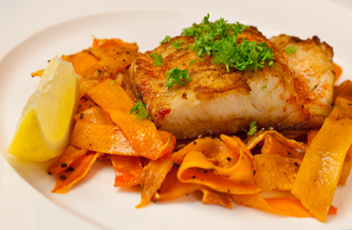Haddock
Haddock is a marine fish distributed on both sides of the
North Atlantic. Haddock is easily recognized by a black
lateral line running along its white side and a distinctive
dark blotch above the pectoral fin.
Haddock reach sizes up to approximately 3.5 feet.
This
species is fished nearly year 'round commerically. Some of
the methods used
are seine nets, otter trawls, long-lines, and
sometimes gillnets.
Fresh haddock has a clean, lean, sweet
tasting white flesh and can be cooked in
the same ways as
cod (though with a finer flake than cod).
The quality of a
haddock fillet can be
determined by how well it holds together,
its firmness and resiliency.
As a high quality fish
- the flesh will
be firm and the fillets translucent.
Older fillets turn chalky
(nearly opaque) – even with an orange/yellowish hue.
Canada, Iceland, Norway, Russia, the United Kingdom,
and the United States are the main suppliers of haddock.
The majority of haddock eaten in the United States is
caught in U.S. or Canadian fisheries.
Fillets IQF
Loins
Portions IQF
Portions (entrée)
Portions (pre-cuts)
Shatter Pack (Fillets and Portions)
Blocks (whole fillet, minced, bits/piece, tailless, loinless blocks)
Chang Versions Offered
Many prefer the cooking methods for Haddock such as
steaming, baking, broiling, frying, or pan frying. High quality
haddock can be cooked in the same methods as cod can
be cooked. Try your hand at a smoked Haddock Chowder
recipe - a great way to use the less "prime cuts" (in other
words, byproduct), such as Haddock loins and full
Haddock fillets.









